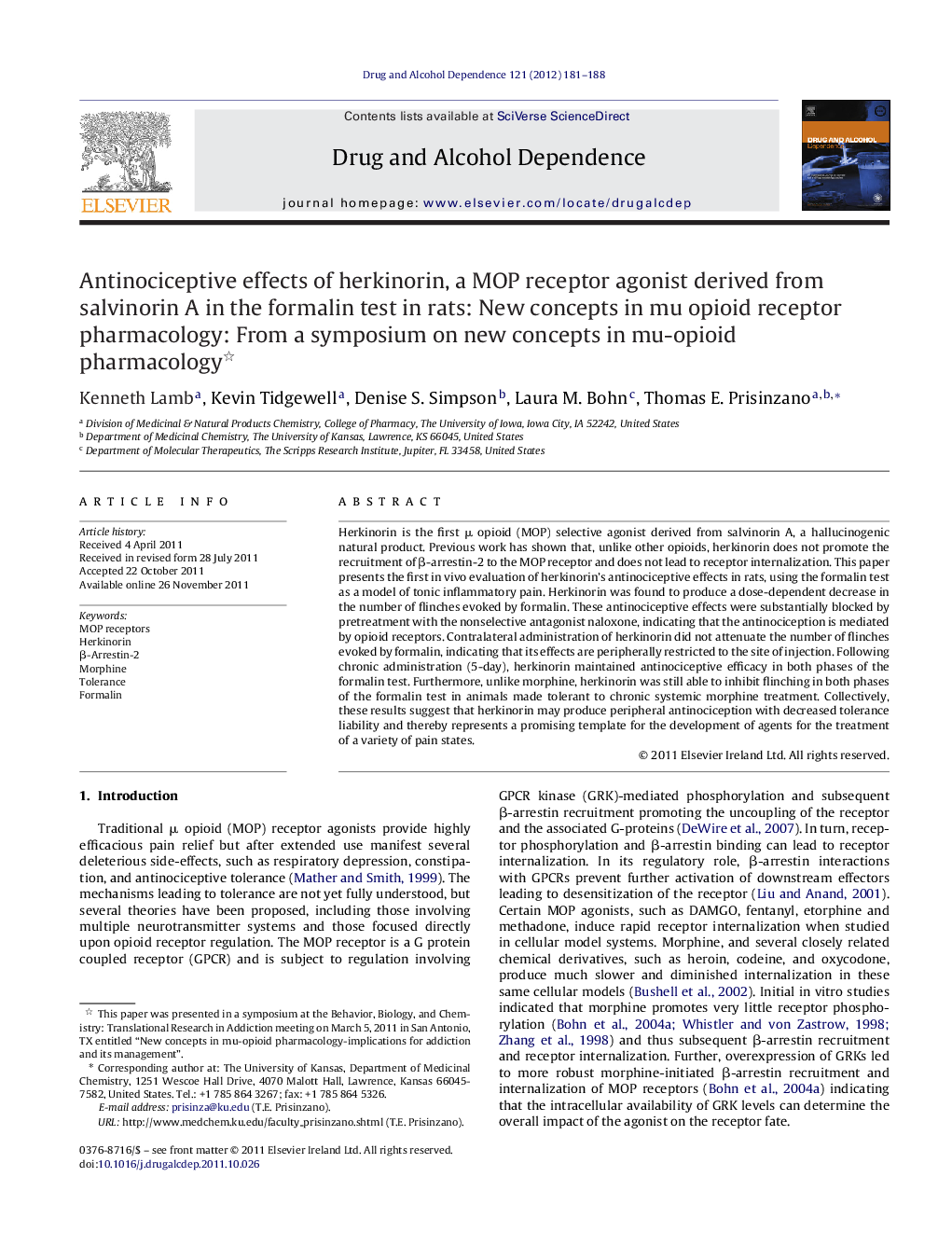| Article ID | Journal | Published Year | Pages | File Type |
|---|---|---|---|---|
| 10509652 | Drug and Alcohol Dependence | 2012 | 8 Pages |
Abstract
Herkinorin is the first μ opioid (MOP) selective agonist derived from salvinorin A, a hallucinogenic natural product. Previous work has shown that, unlike other opioids, herkinorin does not promote the recruitment of β-arrestin-2 to the MOP receptor and does not lead to receptor internalization. This paper presents the first in vivo evaluation of herkinorin's antinociceptive effects in rats, using the formalin test as a model of tonic inflammatory pain. Herkinorin was found to produce a dose-dependent decrease in the number of flinches evoked by formalin. These antinociceptive effects were substantially blocked by pretreatment with the nonselective antagonist naloxone, indicating that the antinociception is mediated by opioid receptors. Contralateral administration of herkinorin did not attenuate the number of flinches evoked by formalin, indicating that its effects are peripherally restricted to the site of injection. Following chronic administration (5-day), herkinorin maintained antinociceptive efficacy in both phases of the formalin test. Furthermore, unlike morphine, herkinorin was still able to inhibit flinching in both phases of the formalin test in animals made tolerant to chronic systemic morphine treatment. Collectively, these results suggest that herkinorin may produce peripheral antinociception with decreased tolerance liability and thereby represents a promising template for the development of agents for the treatment of a variety of pain states.
Related Topics
Life Sciences
Neuroscience
Behavioral Neuroscience
Authors
Kenneth Lamb, Kevin Tidgewell, Denise S. Simpson, Laura M. Bohn, Thomas E. Prisinzano,
